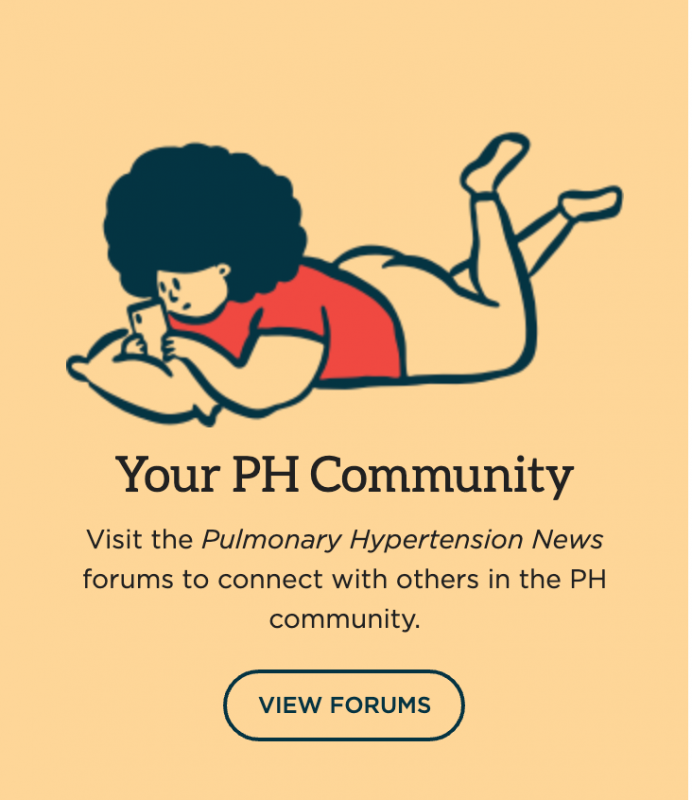In PAH, high blood protein levels may predict poor Uptravi response
Levels of CTRP7 are potential biomarker, lab findings show

Elevated blood levels of a protein called CTRP7 — which are significantly higher in people with pulmonary arterial hypertension (PAH) than in those without the disease — may predict a poor response to Uptravi (selexipag), according to findings from a new study in Japan involving both mice and human cells.
Uptravi, an approved medication for PAH, works by activating the receptors that normally bind prostacyclin, a natural substance that helps regulate blood pressure. However, in the presence of CTRP7, these receptors were pulled into cells, making them unavailable at the surface and limiting the response to Uptravi.
Given these findings, the researchers suggest that CTRP7 could serve not only as a biomarker for PAH but also as a predictor of how well a patient will respond to pulmonary vasodilators such as Uptravi.
Calling CTRP7 “a crucial biomarker,” the team noted that this work opens the door to more personalized treatment strategies that could lead to better outcomes and more efficient use of available therapies.
The study, “CTRP7 as a molecular biomarker associating with responsiveness to pulmonary vasodilators: insights from human and animal studies in pulmonary arterial hypertension,” was published in the journal Cardiovascular Research.
In PAH, the arteries that carry blood from the right side of the heart to the lungs become narrowed, increasing pressure in pulmonary circulation. This added strain makes it harder for the right side of the heart to pump blood effectively. Over time, if left untreated, PAH can lead to heart failure.
Although medications called pulmonary vasodilators can help by relaxing and widening these blood vessels, not all patients benefit equally. One reason is the lack of reliable biomarkers that can predict how well someone will respond to treatment.
Over 3,000 genes expressed differently in PAH patients vs. controls
To find biomarkers with the potential to guide and personalize treatment for PAH, a team led by researchers at the Tohoku University Graduate School of Medicine turned to laboratory testing. The team focused on pulmonary artery smooth muscle cells, or PASMCs, which play a key role in controlling blood flow in the lungs. These cells were grown from seven PAH patients and then compared with those from people without the disease.
The team found more than 3,000 genes were expressed differently — that is, turned on or off — between patients and controls. One gene in particular, called C1q/TNF-related protein 7 (CTRP7), stood out. Its expression was significantly higher in PASMCs from patients, the researchers found.
To confirm these findings, the scientists measured the levels of CTRP7 protein in the blood of 114 PAH patients and 70 people without the disease. Individuals with PAH had significantly higher levels of CTRP7 in their blood, suggesting the protein as a biomarker for PAH.
Interleukin-6 (IL-6), a protein involved in inflammation, is known to be elevated in PAH. In the blood of patients with PAH, higher levels of IL-6 were linked to higher levels of CTRP7.
As such, “inflammation may play a crucial role in the elevation of CTRP7 expression [activity] observed in patients,” the researchers wrote.
The team also discovered that high levels of CTRP7 in lab-grown PASMCs caused a decrease in prostacyclin analogue receptors (PTGIRs). Normally, these receptors are located on the surface of PASMCs. However, when CTRP7 levels were elevated, a transport protein called Rab5a pulled the receptors inside the cells, removing them from the surface.
Because of this, the cells responded poorly to MRE-269 — an active form of Uptravi — which works by activating the PTGIR receptors.
When the researchers silenced the CTRP7 gene in PASMCs, PTGIR stayed on the cells’ surface, and MRE-269 was able to trigger a normal response.
According to the scientists, these results provide strong evidence that CTRP7 may interfere with the medication’s ability to work, which could explain why some patients do not respond well to Uptravi.
CTRP7 levels linked to poor Uptravi response in PAH mouse model
To validate these findings, the researchers turned to mice exposed to low oxygen, a common model used to simulate PAH. Compared with mice exposed to normal levels of oxygen, these animals had high levels of CTRP7 in the blood and low levels of PTGIR in their pulmonary arteries.
These mice also had poor response to Uptravi with low cardiac output — a measure of the volume of blood pumped by the heart — and high resistance in the pulmonary arteries, similar to what is observed in some patients.
“These results suggest that CTRP7 plays a role in diminishing the responsiveness to [Uptravi],” the researchers wrote.
The team noted, however, that when the mice were treated with either an IL-6 receptor–blocking antibody or a gene therapy that silenced CTRP7 in the lungs, the response improved. These treatments improved heart function, lowered resistance in the lung arteries, and helped mice exercise longer, showing real benefits from reducing CTRP7.
These results suggest that CTRP7 plays a role in diminishing the responsiveness to [Uptravi].
Taken together, the study showed that inflammation mediated through IL-6 increases CTRP7, which in turn disrupts the prostacyclin signaling pathway. This may make patients less responsive to pulmonary vasodilators such as Uptravi.
Targeting IL-6 or CTRP7 could help restore treatment sensitivity, the researchers noted.
Overall, the team noted that “multiple analyses using lung and [blood] samples revealed CTRP7 as one of the candidates regulating pulmonary artery responsiveness” in PAH patients using Uptravi.









